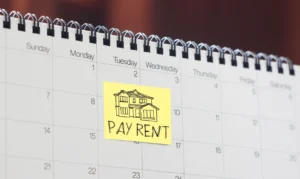Security deposits and renters’ insurance often fall short in practice

Landlords Can Be Their Own Insurers Against Bad Tenants
Owning rental real estate can be lucrative, but it can also be risky. Every landlord has a story about a bad tenant who either defaulted on their rent or caused major damage to the property. These damages can offset an entire year of a property’s profit or more. When you include lost income, legal expenses, and unplanned repairs, the unknown costs of a rental can be even greater than the known ones.
While security deposits and renters’ insurance are standard safeguards, they often fall short in practice. Today’s real estate environment calls for a more robust approach to risk management, one that blends traditional insurance with modern captive insurance solutions designed specifically for residential portfolios.
A tenant default occurs when a resident fails to meet lease obligations, often resulting in missed rent payments and legal proceedings to regain possession of the unit. The financial impact can be severe. In addition to losing rental income, property managers must cover the costs of finding a new tenant, re-listing the property, and possibly litigating to recover unpaid rent or enforce eviction.
Property damage brings its own set of challenges. Even with a security deposit in place, landlords often find that repairs exceed the amount held in reserve. Additionally, while many lease agreements require renters’ insurance, compliance is difficult to monitor. A certificate of insurance may be presented at the beginning of the lease, but few landlords have systems in place to ensure coverage remains active throughout the lease term.
These risks make it essential for residential property owners and operators to pursue more reliable and proactive protections.
Self insurance
A solid foundation in risk management starts with preventive practices such as improved tenant screening, clear lease terms and routine inspections. These steps help reduce the frequency and severity of defaults and damage. However, prevention alone is not enough.
There are a few options for landlords when it comes to tenant insurance. The first is tenant default insurance. This type of insurance compensates owners for lost rent when a tenant defaults on a lease.
The other option is tenant liability insurance. This type provides coverage for property damage caused by tenants. These policies add a layer of financial protection beyond what security deposits can offer and help stabilize revenue streams even when tenants fail to meet their obligations.
There are two types of programs for risk transfer. Landlords can use a third-party insurance company or create a captive vehicle to self-fund the risk. With a captive arrangement, residential property owners can create their own insurance entity to provide customized coverage for tenant-related risks. Two particularly effective captive models are tenant liability captives and tenant default captives.
Paying Too Much For Insurance?
Get a FREE quote to insure your rental properties for less.
Tenant liability captive is a model where tenants pay a small, non-refundable monthly fee (typically between $15 and $20) which is directed to a captive manager hired by the property owner in conjunction with our insurance broker. A portion of these monthly funds accumulate in a pool used to pay for covered losses such as property damage or related liability claims, streamlining the claims process and reducing reliance on tenant-provided insurance.
The advantage of a tenant liability captive is that property owners maintain greater control over risk mitigation while building reserves that can be used across the portfolio. It also allows the property owner the ability to pay claims out of the captive rather than submitting tenant-caused damage to their buildings to their insurer, who might then raise their rates.
The other way that landlords can self-insure their properties is with a tenant default captive. These are structured to replace the traditional security deposit. Instead of paying a lump sum upfront, tenants are charged a monthly fee (often between $12 and $14) in exchange for a waiver of liability that can cover several more months of lost rent compared to a security deposit.
This removes the administrative burden of managing deposits, expands the potential tenant pool (especially for those unable to pay a large deposit), and provides immediate access to funds in the event of default. Over time, as claims remain low, the excess funds in the captive can also be treated as income, adding to the overall profitability of the property.
While the benefits of captive insurance are compelling, these programs are best suited for operators with larger portfolios—generally those managing at least 2,500 of non-subsidized rental units. The economies of scale in such portfolios allow for more efficient administration of the captive and sufficient risk pooling to make the program viable.
For qualifying property owners, captives offer a strategic way to reduce exposure, improve cash flow predictability, and even generate income from unused reserves. There are many options for risk transfer through insurance companies and even through property management software companies. In some cases there are rebates to be had from the insurance companies back to the owners.
However, the overall profits compared to those of a captive are retained by the insurance company. Talk to your broker about the benefit and cost savings of having one or both of these types of insurance for your portfolio on your current and future property insurance program.
Proactive protection
Protecting against tenant defaults and property damage requires a combination of proactive risk management and smart insurance strategies. While traditional tools like security deposits and renters’ insurance play a role, they are no longer sufficient on their own.
By integrating tenant default and liability insurance — and especially by adopting captive solutions — residential property owners and operators can better manage risk, protect income and reduce the operational friction associated with tenant turnover and property damage.
As the residential rental market grows more competitive, these approaches offer a distinct advantage to owners looking to secure and scale their operations.
Source: Propmodo













 Accessibility
Accessibility